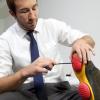As we get older it’s so important to look after our physical health. Staying mobile can be a
real boost for independence, confidence and mental health, no matter what their
circumstances.
Residential care homes for elderly people often have a range of activities to encourage
residents to stay active and whether living alone or in such a residence, getting involved and
exercising can be so impactful on a pensioner's life.
Of course, only a select few can head out doing marathons, after all, very few of us are Ron
Hill (!), there are plenty of gentle exercises that can make all the difference.
Walking
Of course, one of the simplest and most accessible forms of exercise is walking. You don’t
need any special equipment and, ultimately, you can do it anytime, anywhere.
Walking regularly can be beneficial for a number of reasons, boosting cardiovascular health,
strengthening muscles and enhancing balance and coordination, something that can often
leave us as we get older.
Tips for Walking:
● Start with shorter distances and build upon them as you improve
● Wear comfortable and supportive footwear.
● Consider more scenic routes such as parks, lakes and canals.
● Use additional support such as walking poles for balance.
Chair Yoga
Yoga has become all the rage in recent years, improving both physical and mental health.
Chair yoga is a gentler form that is certainly pensioner friendly, with the chair providing
support through a range of exercises. Chair yoga can improve balance and strength, as well
as flexibility, with the added bonus being it’s absolutely fantastic for combatting stress.
Basic Chair Yoga Poses:
● Seated Cat-Cow Stretch: Sit in a comfortable position and alternate between arching
your back and rounding it, stretching the spine.
● Seated Forward Bend: Sit on the chair and gently bend forward your hips, reaching
for the floor.
● Seated Twist: Place your feet flat on the floor and twist your torso one way and place
your opposite hand on the thigh in the direction you’re facing. Then repeat this on the
other side.
Water Aerobics
Low impact exercises can be really beneficial for people entering their older years as they
are much easier on the joints. Water aerobics is one such exercise, with it helping reduce
stress as well as providing a full body workout. It can improve cardiovascular fitness,
strength and flexibility, all of which can be vital for keeping us mobile in our later years.
Benefits of Water Aerobics:
● Reduced risk of injury due to the supportive nature of water.
● Enhanced muscle strength and flexibility through water resistance.
● Improved cardiovascular health with a lower impact on joints.
● Social interaction in group classes, fostering a sense of community.
Tai Chi
A form of martial art, Tai Chi focuses on slow, deliberate movements alongside deep
breathing. It can help reduce the risk of falls as well as boosting coordination as it is well
known for improving balance and flexibility. It’s also another exercise that is fantastic for
relaxation.
Basic Tai Chi Movements:
● Commencement: Stand with your feet shoulder width apart. Your arms should be by
your side, before slowly raising them to shoulder height, holding and bringing them
back down.
● Parting the Horse’s Mane: Step to the side, shifting your weight as you do and move
your arm in a sweeping motion.
● Grasping the Bird’s Tail: Similar to the above, step forward and shift your weight,
moving your arms in a circular motion.
Light Strength Training
Finally, building muscle and improving bone density and overall strength can be enjoyed by
very light strength training. Using small weights and resistance bands can help pensioners
maintain their strength and as a result be more mobile and better balanced while walking.
Basic Strength Training Exercises:
● Bicep Curls: Stand or sit down with a weight in each hand. Your palms should be
facing forward and you need to slowly lift the weights towards your shoulders. Then
lower them back down.
● Leg Lifts: Sit on a chair and extend one of your legs straight. Lower it back down and
then repeat with the other leg.
● Wall Push-Ups: Face the wall, standing up with your arms at shoulder height. Place
your palms on the wall and bend your elbows, leaning in. Push back to your starting
position.
All of the above are simple enough exercises to do, aren’t too strenuous but over time can
have a significant impact on the likes of strength and balance, something that we need to
monitor and maintain in our latter years to stay independent, confident and to live our best
lives.
Also read: exercise for strong bones.








